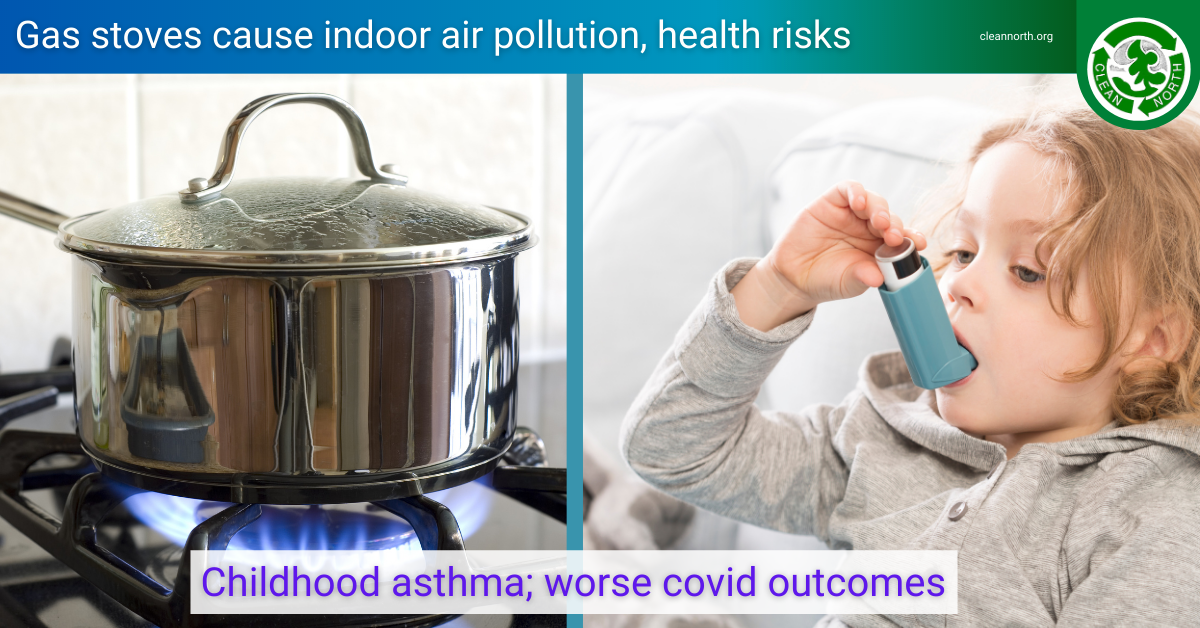
Gas stoves release pollutants that can make us sick or sicker, especially when it comes respiratory conditions like asthma. And the pandemic, which has resulted in people spending much more time at home, is only increasing those risks. Results of a study released by the Rocky Mountain Institute show that:
- Gas stoves release hazardous pollutants, notably nitrogen dioxide and carbon monoxide.
- Homes with gas stoves have nitrogen dioxide concentrations 50–400% higher than homes with electric stoves. Exposure, even in the short term and at low levels, can cause respiratory effects.
- Children are at increased risk from illnesses associated with gas stove pollution; living in a home with a gas stove increases their risk of having asthma by 42%.
- Lower-income households may be at higher risk of exposure to gas stove pollution.
- Proper ventilation is key to managing gas stove pollution — but many homes do not have it. If the fan over your stove is not vented to the outside, that’s a problem.
Two Health Canada researchers studied whether kitchen exhaust fans were efficient in reducing cooking pollutants and how long we should leave them on. They were surprised to find that the greatest exposure is during the hour after cooking rather than while cooking. Pollutants linger in the air long after you turn the stove and fan off off (and again, unless your fan directs fumes outside, it’s not effective).
Also disturbing: Another study showed that exposure to nitrogen oxide from gas appliances compounds the dangers of covid-19 (click the link below to read more).
If you choose to replace your gas stove to reduce your family’s exposure to indoor pollutants, try to find one that is energy efficient. Induction cooktops are the most efficient, but they are also much more expensive. Two features to look for in a regular electric stove are convection cooking (allows you to cook food faster and at a lower temperature) and self-cleaning (has added insulation). Using a toaster oven whenever possible will also reduce your overall energy use.
If you are unable to replace your gas stove, ensure good ventilation while cooking: Turn the exhaust fan on high and crack a window. If you don’t have an exhaust fan or yours is broken, remedy that.
Want to know more?
- Health and Air Quality Impacts of Cooking With Gas — Rocky Mountain Institute report
- Cooking Up a Storm — Science of Health, Government of Canada website
- Why Gas Stoves Are More Hazardous Than We’ve Been Led to Believe
- Urban Air Pollution May Enhance COVID-19 Case-Fatality and Mortality Rates in the United States




